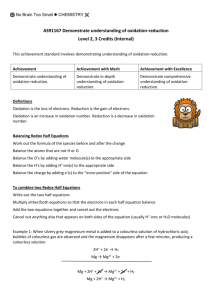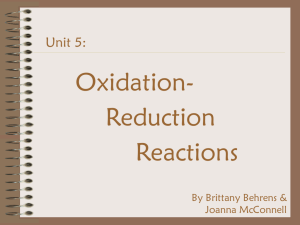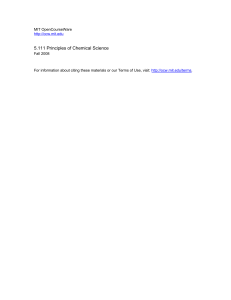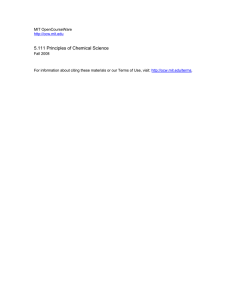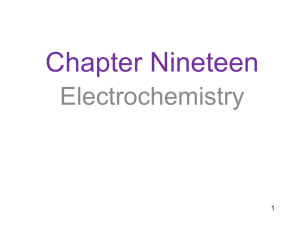Chemguide – answers OXIDATION STATES
advertisement
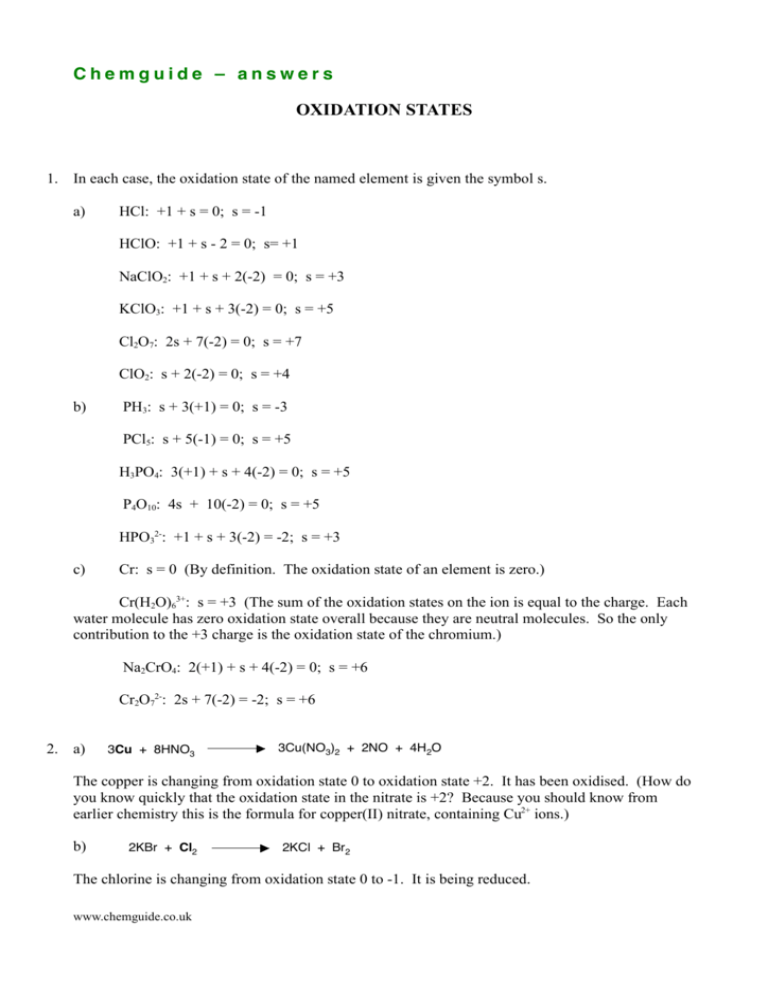
Chemguide – answers OXIDATION STATES 1. In each case, the oxidation state of the named element is given the symbol s. a) HCl: +1 + s = 0; s = -1 HClO: +1 + s - 2 = 0; s= +1 NaClO2: +1 + s + 2(-2) = 0; s = +3 KClO3: +1 + s + 3(-2) = 0; s = +5 Cl2O7: 2s + 7(-2) = 0; s = +7 ClO2: s + 2(-2) = 0; s = +4 b) PH3: s + 3(+1) = 0; s = -3 PCl5: s + 5(-1) = 0; s = +5 H3PO4: 3(+1) + s + 4(-2) = 0; s = +5 P4O10: 4s + 10(-2) = 0; s = +5 HPO32-: +1 + s + 3(-2) = -2; s = +3 c) Cr: s = 0 (By definition. The oxidation state of an element is zero.) Cr(H2O)63+: s = +3 (The sum of the oxidation states on the ion is equal to the charge. Each water molecule has zero oxidation state overall because they are neutral molecules. So the only contribution to the +3 charge is the oxidation state of the chromium.) Na2CrO4: 2(+1) + s + 4(-2) = 0; s = +6 Cr2O72-: 2s + 7(-2) = -2; s = +6 2. a) 3Cu + 8HNO3 3Cu(NO3)2 + 2NO + 4H2O The copper is changing from oxidation state 0 to oxidation state +2. It has been oxidised. (How do you know quickly that the oxidation state in the nitrate is +2? Because you should know from earlier chemistry this is the formula for copper(II) nitrate, containing Cu2+ ions.) b) 2KBr + Cl2 2KCl + Br2 The chlorine is changing from oxidation state 0 to -1. It is being reduced. www.chemguide.co.uk Chemguide – answers c) [Cu(H2O)6 ]2+ + 4NH3 [Cu(NH3)4(H2O)2 ]2+ + 4H2O The oxidation state of the copper is unchanged at +2. This isn't a redox reaction. See the comment on the Cr(H2O)63+ ion in 1(c). 3. a) The iron oxidation state has increased from +2 to +3, an increase of +1. The chromium's oxidation state has fallen from +6 to +3, a fall of 3. But there are two chromiums. The total oxidation state fall of the chromiums is therefore 6. (Well done if you got this! If you didn't, rework the rest of the question before you read on.) You will need 6 Fe2+ to react with Cr2O72-. b) Starting from the proportions you have just found: 6Fe2+ + Cr2O72- 6Fe3+ + 2Cr3+ It would seem reasonable that the oxygen atoms would end up in water molecules – so you would produce 7 water molecules on the right-hand side. 6Fe2+ + Cr2O72- 6Fe3+ + 2Cr3+ + 7H2O The reaction is done in acid solution, so the hydrogens probably come from hydrogen ions: 6Fe2+ + Cr2O72-+ 14H+ 6Fe3+ + 2Cr3+ + 7H2O Check the charges balance as well as the atoms. They do, so that is the final equation. www.chemguide.co.uk






